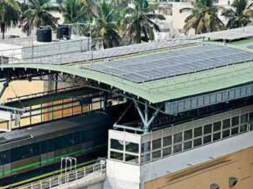
Tesla Can Overcome Supply Constraints In Its Fast-Growing Energy Storage Business
- Fast-growing demand for both commercial and residential battery products.
- 2019 should be the year that Tesla finally ramps up its battery energy storage business.
- Energy storage is an under-rated growth area for the company.
- The world moving inevitably toward renewable energy and battery energy storage.
- Opportunities now there for the company as supply constraints lessen and financing improves.
Tesla (NASDAQ:TSLA) had tremendous success in its large-scale project business for energy storage in 2018. Its residential business was however very supply-constrained due to the ramp-up of production for the Model 3 launch.
My article in January detailed the background to this.
The company has repeatedly stated that it’s not essentially an auto company. Rather it’s a new energy company based around battery power. They have stated on numerous occasions that they expect energy storage revenue to equal auto revenue.
There’s now an opportunity for Tesla to focus more management time and resources on this side of the business. They now have the capital and the facilities to do this. The recent capital raise for US$2.7 billion was very well received. The company should receive US$1.8 billion in EV credits from Fiat Chrysler (NYSE:FCA) before 2022. Chinese banks are offering loans at very favorable rates for the Shanghai project.
Now it’s a management decision whether or not to give more priority to energy storage as supply constraints wane and financing improves. The market opportunity is huge as fast-growing renewable energy leads to escalating demand for battery storage. Developments early this year seem to point to an increasing focus on energy storage by the company.
What the Company Said for Q4 2018
Tesla’s management has repeatedly emphasized the centrality of energy storage to their business. At the Q4 2018 analyst call Elon Musk outlined:
“We had to convert a bunch of stationary storage lines, battery lines, to vehicle battery lines. Otherwise we would have done quite a bit more in stationary storage. I expect that to grow probably twice as fast as automotive.”
















